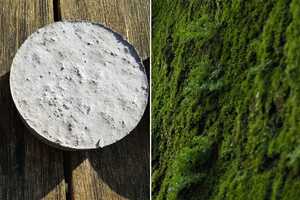Fungi-Based Building Materials





















Mycocrete is an Eco Material Developed by Newcastle University
Jana Pijak — January 29, 2024Scientists at Newcastle University have developed mycocrete, a building material derived from the intricate root network of fungi. This environmentally friendly material uses knitted molds to address fungi's organic growth constraints. Mycocrete, which is both stronger and more adaptable than previous fungal composites, can be molded into a variety of forms, is lightweight, and is an eco-friendly material option.
Creating mycocrete involves mixing mycelium spores with grains, relying on the grains as both a food and growth source. Knitted textiles act as molds, enabling the mycelium to grow in a flexible framework. The resulting material has the potential to replace foam, timber, and plastic in construction.
Scientists at the Living Textiles Research Group, part of the Hub for Biotechnology in the Built Environment -- a joint venture between Newcastle and Northumbria Universities and funded by Research England -- are behind this impressive project. To showcase their proof of concept, the team also built a conceptual structure called BioKnit, described as a "complex freestanding dome constructed in a single piece without joins that could prove to be weak points, thanks to the flexible knitted form."
When tested against traditional mycelium composites, mycocrete surpassed its counterparts, and presents a greener alternative for the construction industry. It also showcases the immense sustainable potential of biofabricated architecture.



